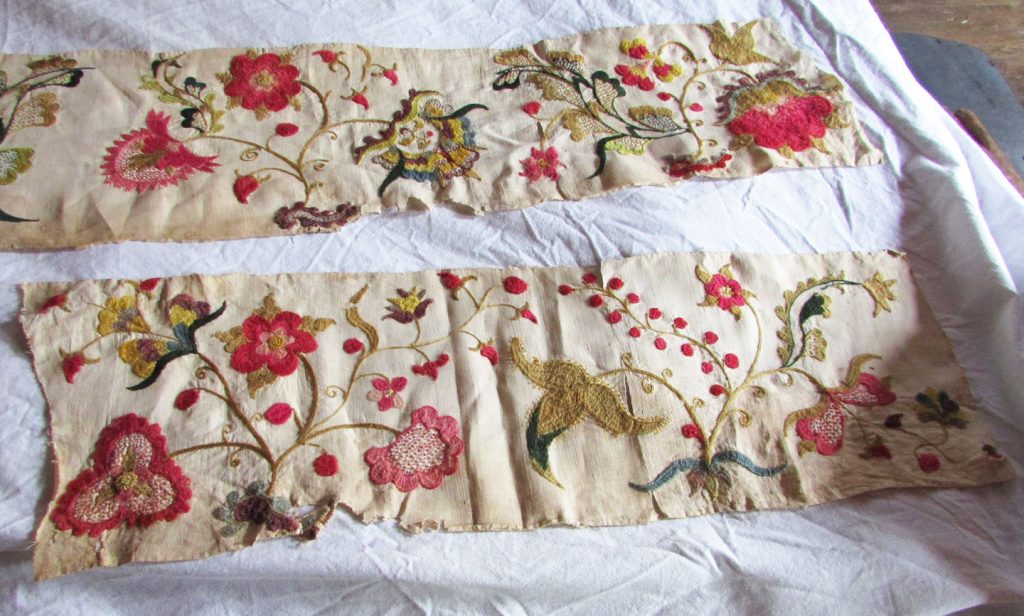Crewel Worked Bed Valances

The bed hanging valences shown above are truly lovely in that the colors of the yarns have remained so vibrant. Dated to the 18th Century, they are very nice examples of American crewel work.
The needle workers, as men and women both practiced the art, in the American Colonies developed a crewel work style of their own by the early 18th Century. Based on English traditions the American designs are recognized by textile scholars for its individuality.
Crewel began evolving as a needle art in the 16th Century in England. One of the significant factors that encouraged the art was the availability of steel needles by the mid-16th Century. The name crewel work, is taken from the type of yarn that was used – crewel yarn was a loosely twisted, two ply yarn made from long wool fibers. It’s popularity in England began to wane by the beginning of the 18th Century, but in the American Colonies it continued through the century.
Furnishing textiles leant themselves well to this type of decoration and were the first items embroidered with the new technique. Bed hangings, bed coverlets/spreads, large chair cushions call squabs, and chair seat covers became the most common furnishing items decorated with crewel work. As the popularity of the skill expanded, numerous other items fell under the crewel needleworkers hand: petticoats, ladies’ bodices, children’s and women’s gowns, stomachers, and men’s caps, wallets and waistcoats.
Crewel work used stitches needleworkers were already familiar with at the time it became popular. Common stitches were/are: Outline, Roumanian Couching, Flat Stitch, Ladder, French Knit, Seed, Weaving, Buttonhole, Back Stitch and Chain Stitch, Herringbone, and Loop. Unlike the English work, American crewel pieces show that a relatively few stitch types were employed, that is, five or less.
In American crewel designs, the background fabric is not completely covered, in most pieces it is very much open, as can be seen in the valences above. One factor given for this is that the crewel yarns had to be important and were expensive, so they were used in a frugal manner.
As stated above, the valences shown here are so vibrant in color. These colors were obtained from natural sources. Cochineal, a beetle found in South America, would have provided the pinks. Indigo, the plant, was used to obtain blues. Fustic, which gave yellows, and Logwood, which was used for purples and blacks, were made from the barks of trees of the same names. Green, was a top-dye color; there isn’t a plant or tree in natural that give a good green, the yarn would have to be dye yellow first and then topped dye with blue, or visa-versa.
These two pieces of embroidery can share a number of insights on the past: fabric type, dyeing skills, world trade (dye material), artistic design, and skill with needle and yarn.
Louise Miller, LCHA Education Director

 Newsletter
Newsletter Join LCHA
Join LCHA Donate Now
Donate Now